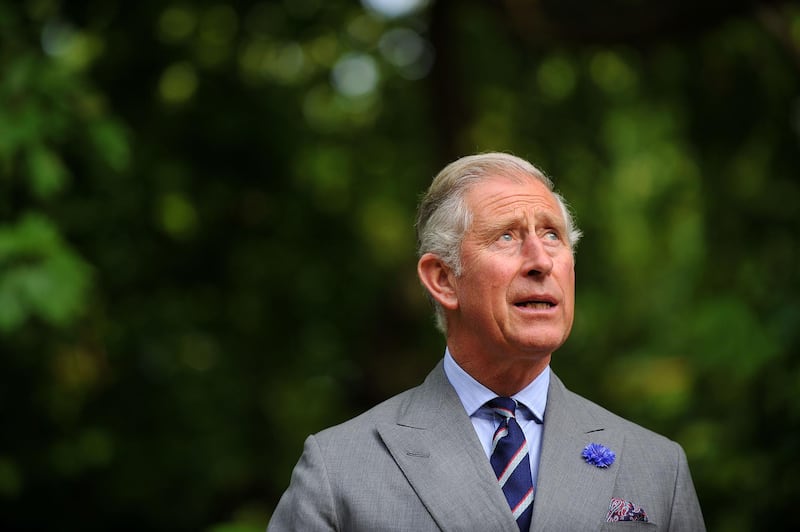It was said of Queen Victoria and her son, Bertie, Prince of Wales: "The Queen reigns and reigns and won't let the son shine." In the case of her great-great granddaughter, Elizabeth II, it is more a case of "the Queen shines and shines and won't let the son reign."
It all stems from that pledge she famously made in Africa, on her 21st birthday. "I declare before you all that my whole life, whether it be long or short, shall be devoted to your service and the service of our great imperial family to which we all belong." Six years later, in June 1953, it was sanctified in Westminster Abbey when Geoffrey Fisher, Archbishop of Canterbury, placed the St Edward's Crown on her young head with the words, "As kings, priests and prophets were anointed, and as Solomon was anointed king by Zadok the priest … so be thou anointed, blessed and consecrated Queen over the peoples whom the Lord thy God hath given thee to rule."
Trumpets sounded, a thousand peers and peeresses rose and put on their coronets and then the Archbishop, Prince Philip, two of her uncles, and a representative from each of the five degrees of peerage all paid homage. Then again came a roar throughout the Abbey:
“God save Queen Elizabeth!
Long live Queen Elizabeth!
May the Queen live forever!”
Sixty-five years on, it seems that she might. Prince Charles attended his mother’s coronation. He was only four, so his memory of it may be faint, although a witness claimed that, as his mother took the Sovereign’s Sword, advanced with it to the altar and offered it to God, he watched enraptured.
As he turns 70 today, he, as much as anyone, will understand why his mother will never surrender her Crown. Yet he must often think about what Alan Bennett once famously said: that being Prince of Wales is not so much a position as a predicament. His predecessors as heir to the British throne – the Prince Regent, Victoria's Bertie, and David, Prince of Wales – all spent decades of anticipation in idling, self-indulgence and sport (on and off the field). Charles has never been idle. But nor has he ever been idolised or at ease with himself.
Early life
It all began with his childhood. Charles Philip Arthur George arrived, to much rejoicing, a year after his parents’ marriage. Diffident, dreamy, vague and vulnerable, he was a child who craved affection and reassurance, but he was born to a couple of their time and station – pillars of self-restraint and the incarnation of the stiff upper-lip. His father, Prince Philip, essentially an exiled orphan, had little experience of a home life and from the beginning; Elizabeth had accepted that while she might wear the crown, Philip would wear the trousers.
Yet, even by the strictures of the times, and the fact that she was bound to duty, the Queen was extraordinarily self-contained. (The very thing that has made her a model monarch). Once when she absent-mindedly said to Charles, “Goodnight, darling”, he was stunned, ‘You called me darling!” And so, Charles turned to his nanny, Mabel, his governess, Mipsy, and his grandmother, the Queen Mother.
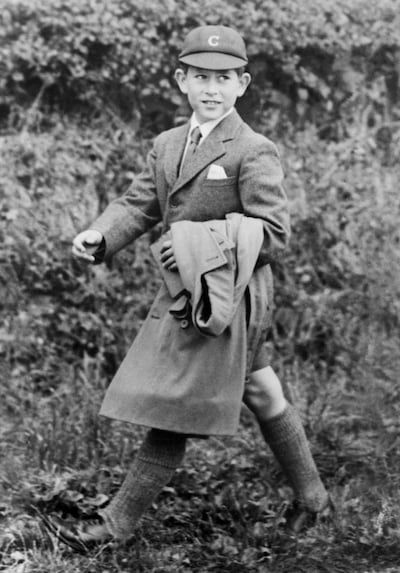
No heir has been so thoroughly prepared for sovereignty. Prime ministers, archbishops, and peers were consulted, yet ultimately choices fell to Philip, who seems to have craved a son in his own image; or at least one who would follow in his confident stride (although – eventually – never three steps behind. Perhaps that is key to the uneasy relationship between father and son?) At eight, he was dispatched to board at his father's old prep school, Cheam. Friendless and homesick, missing Mipsy and Mabel, he was called "fatty" and shunned. Decades later, he recalled the acute embarrassment of being called into the headmaster's study to watch television with a few other boys to hear (without warning) his mother proclaim that she had made the nine-year-old, Prince of Wales. "When he is grown up I shall present him to you at Caernarfon."
He then had to endure another one of his father's schools, Gordonstoun in Morayshire, which he called Colditz in kilts, likening it to a prisoner of war camp owing to its strict rules and harsh treatment of pupils. If Cheam had been purgatory; Gordonstoun was hell. He wrote home: "The people in my dormitory are foul … They throw slippers all night long or hit me with pillows or rush across the room and hit me as hard as they can. Last night was hell, literal hell ... I still wish I could come home."
But stay he did. Although there was some respite – the Antipodes came to the rescue. Geelong Grammar School in Victoria, Australia, was selected for Charles to spend a term, or two, before one final year at Gordonstoun. He was soon settled at Timbertop, the school's outpost in the foothills of the Victorian Alps. Charles skied, ran, hiked and helped with the rankest menial tasks. Contemporaries remember him, as head server in the chapel, hobbling about the sanctuary with blisters after a weekend hike – so true, again and again to his motto Ich Dien ( I serve). As he bid farewell to his classmates, he was given a rousing "three cheers for Prince Charles, a real Pommie."
He claimed: "Australia got me over my shyness." David Checketts, the courtier who accompanied him, famously claimed that he flew out with a boy and returned with a man. The first person he called on his return was Mipsy. Gordonstoun was not quite as bad the second time. He was made guardian at school – as his father had been – and his mother made him a privy councillor (he heard it on the BBC news).
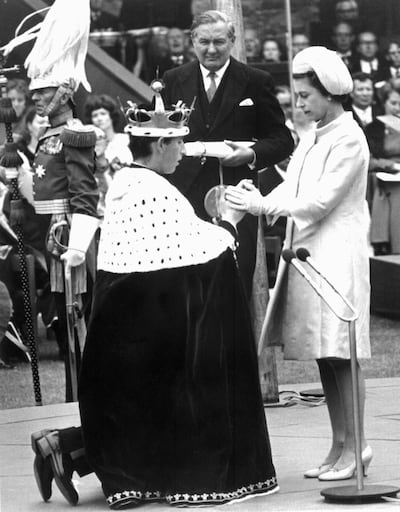
He did well enough to enter Cambridge on his own merits. Having his own rooms at Trinity College, and easy access to the Master, Lord R A Butler’s house, afforded him a broad education, and although he did not make many friends at University, he gained a circle of aristocratic chums – as one biographer put it – “hunting, shooting and fishing for invitations” to Sandringham. They provided him with the loyalty, discretion and respect he valued. That traditional circle has largely remained his set. He emerged with a lower Second – the first heir (ultimately the first British sovereign) to earn a degree. After Cambridge, he would join the services, including six years in the Royal Navy, where, again, he felt home- and seasick.
Love life
In 1971, 23-year-old Charles was introduced to 25-year-old Camilla Shand by her neighbour, who also happened to be Charles's first girlfriend, Lucia Santa Cruz. The daughter of war hero Major Bruce Shand, and Rosalind Cubitt, she proved to be his first great and enduring love. Tina Brown claims in her 2007 biographical book The Diana Chronicles that "If you slapped an Edwardian-style picture hat on the head of Camilla Parker Bowles, you would be struck by her resemblance to Prince Charles's adored nanny, Mabel Anderson."
But others consider that in looks, manner and habits Camilla is remarkably like her great-grandmother, Alice Keppel, Edward VII’s “La Favorita”. He declared his love, but not his hand. Marriage to Camilla was not then acceptable as the popular and vivacious Miss Shand had a past and Charles’s closest mentor, “Uncle Dickie” (Lord Louis Mountbatten) while encouraging the relationship, reflected the Establishment’s view that any Princess of Wales needed to be an untouched blue blood.
He was at sea when Camilla's engagement to her long-term, on-off lover Andrew Parker Bowles was announced in March 1973. Charles was devastated. Diligent and dutiful, the Prince rose to command his own – well, his mother's – ship, HMS Bronington. When he emerged from the navy, The Daily Mail cheekily placed an advertisement: "Situation sought: Prince, 29, degree, ex-army, navy, RAF, seeks employment. Will go anywhere, try anything once."
But he soon found himself energetically supporting the Queen's Silver Jubilee. He had once said – to his later regret – that 30 was a suitable age to wed. When that milestone came – and passed, he faced enormous pressure to walk down the aisle. But of course a suitable bride had to be found. Then, at last, in 1980, the enchanting, chaste 19-year-old, Lady Diana Spencer emerged. The Wedding of the Century ensued. As then Archbishop Dr Robert Runcie said, it was "the stuff of which fairy tales are made".
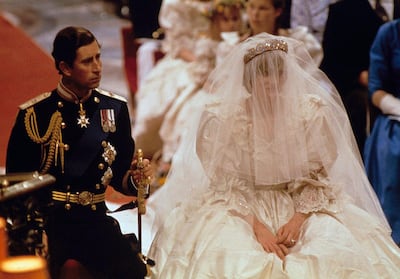
By the time their sons William and Harry were born, Diana was a superstar; loved, it seemed, by everyone on earth – except her husband. Diana dismissed his noble initiatives and opinions as a "waste of space". She saw herself as a work in progress and Charles as a work in aspic. When the infamous Camillagate tape came to light in 1989, it not only revealed their passion, but explained why Camilla was Charles's perfect partner. As Brown put it, Camilla was begging to read his latest speech – this is what being loved really meant. Charles confirmed they were lovers in his misjudged interview with Jonathan Dimbleby, where he said he had remained faithful to his wife "until the marriage had irretrievably broken down". It spelt the end of her marriage to the Brigadier.
_________________________
Read more:
Queen Elizabeth launches British commemorations 100 years after WW1
Every outfit Meghan Markle wore on her first royal tour: 36 different looks
Meghan Markle and Prince Harry pass on baby bump greetings - in pictures
_________________________
At the end of 1995, a sombre, kohl-eyed Diana retaliated in a sensational BBC interview. Diana's line (coined by Ruby Wax) that "there were three of us in this marriage – it was a bit crowded", was enough for the Queen to call for a formal separation. Divorce was inevitable and when settlement was finally reached, St James's Palace announced that the Prince of Wales had "no intention of remarrying". Charles was soon employing a hard-nosed spinmeister, Mark Bolland, to resurrect Camilla's image and his own. This came to a crashing end when Diana was killed in August 1997. Charles feared he would be assassinated, while Camilla went into hiding. But Bolland's genius and the Prince's almost uncharacteristic doggedness – he simply put his head down and carried on – and brought public opinion around. Charles and Camilla made their first public appearance together at a party for her sister at The Ritz in London. In 2002, they kissed in public for the first time.
Charles had made it clear that Camilla's role in his life was "non-negotiable". The Queen was eventually persuaded that her heir's marriage to the woman he had loved for 30 years was inevitable. The civil wedding and blessing took place on April 9, 2005, three years to the day of the funeral of the groom's beloved grandmother. Thirteen years on, Camilla has brought a warmth, an enthusiasm and that almost conspiratorial deep throaty laugh, which draws in the executives, volunteers, and patients she meets. She evidently makes her prince happy; at least as happy as his nature will allow.
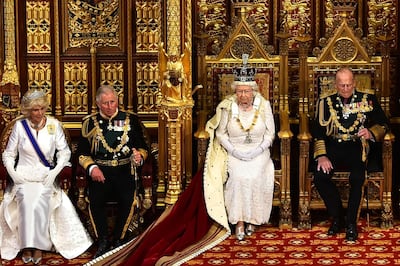
What's next?
Looking to the wider world, the Queen's beloved Commonwealth, the object of her 21st pledge and her reign's focus, Charles has also come to embrace the 53 nations that comprise it. Only this month, the Prince of Wales and the Duchess of Cornwall were touring East Africa with energy and good humour. Surprisingly, there was no legal or formal provision for the title to pass automatically to her son on her death, but with the strong support of the Queen, Charles was designated in April this year as the next Head of the Commonwealth.
He could have hunted, shot and fished as he waited for the throne – throwing in the odd official engagement, but as long ago as 1976, he founded The Prince's Trust, which is said to have turned around the lives of 870,000 young people. He has also chosen to opine and agitate on issues he felt passionate about – among them – the environment, architecture, organic farming and alternative medicine. A decade-long battle by The Guardian for access to his handwritten correspondence with his mother's Ministers – the so-called "Black Spider memos" – was finally won.
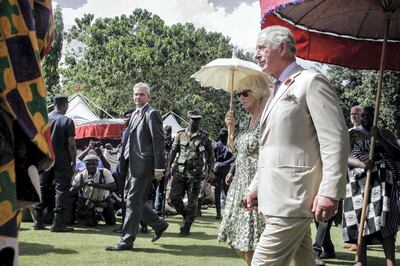
But, essentially, it revealed a man whom The Guardian saw as more "a bore on behalf of his good causes than as any sort of wannabe feudal tyrant". Meanwhile, The Telegraph thought the letters exposed the Prince's "passion and dignity" – and this has come at some cost. While the members of his parents' court served quietly until retirement, the casualties in Charles's office would make the NHS blanch.
In a way, one can understand the petulance, the self-doubt and self-pity. As the decades roll on, it becomes clearer that the brilliance of his mother’s reign is matchless; an impossible act to follow. And yet, Charles, as Prince of Wales, for all his wavering and wailing; his sackings and sighing, has been true to his motto, Ich Dien.
Happy Birthday, Sir.
